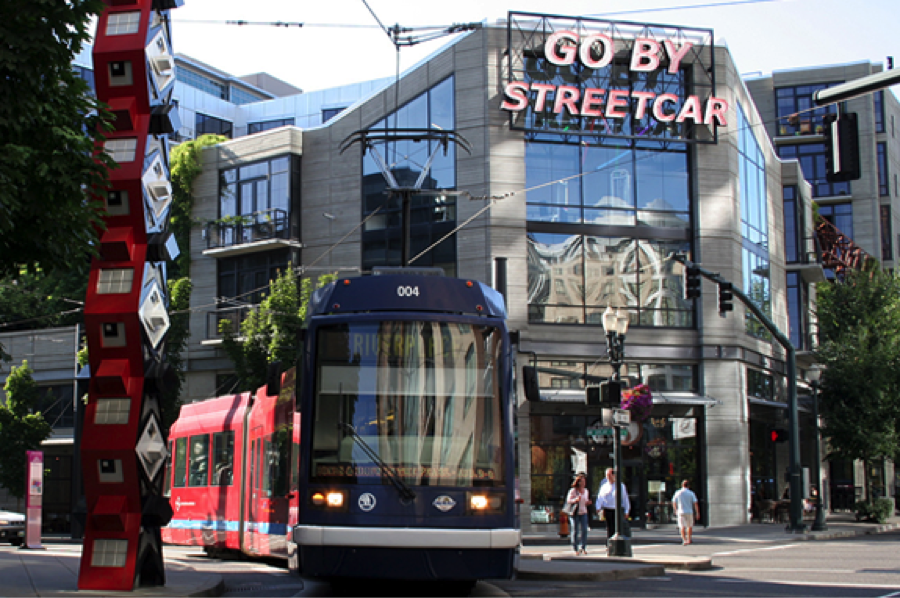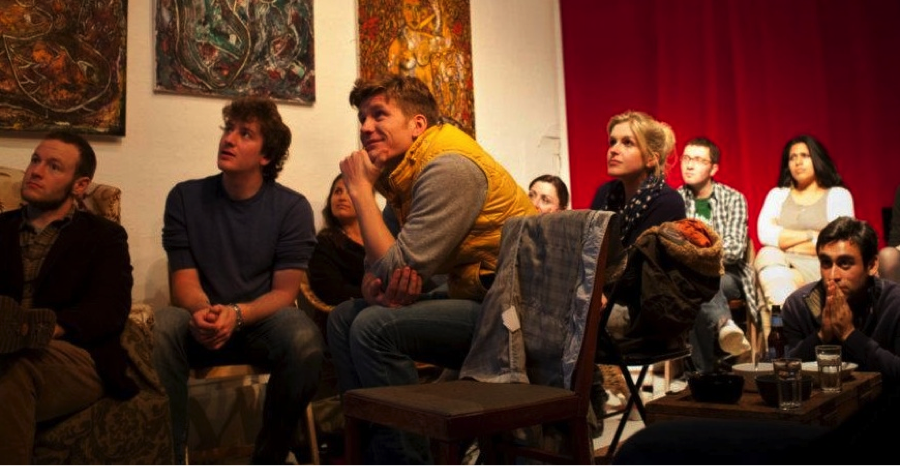Laying the Groundwork for Urban Mobility and Social Connectivity

Who will you meet?
Cities are innovating, companies are pivoting, and start-ups are growing. Like you, every urban practitioner has a remarkable story of insight and challenge from the past year.
Meet these peers and discuss the future of cities in the new Meeting of the Minds Executive Cohort Program. Replace boring virtual summits with facilitated, online, small-group discussions where you can make real connections with extraordinary, like-minded people.
There are a few ways to think about connecting residents to economic opportunity. At the most literal level, this means providing city residents equitable access to economic centers, in other words providing public transportation. Thinking about how to improve upon this is difficult for local governments with constrained budgets. There is a tension between maintaining current infrastructure and investing in innovation for the future.
One innovative concept, which is a component of Smart Growth, is called Transit Oriented Development, or TOD. The Victoria Transport Policy Institute (VTPI) provides a deep dive on how TOD maximizes access between residential and commercial centers. This accomplished by creating dense development around rail or bus lines and then decreasing density in concentric circles of .25 to .5 miles outwards, on a pedestrian scale. While having enough population density is usually a concern for investing in transit, TOD utilizes a diverse ridership base, including lower-income riders, students, seniors, and disabled populations. These riders use public transit more frequently and reduce the population density requirements for traditional public transit to be viable. This model of development is dependent on connecting a diverse demographic between home and the workplace.
Additionally, transit-oriented development can stimulate economic growth. A great example of this is Portland Oregon’s light rail system, constructed in 2005, which applied TOD in the greater Portland area. In a report published by TriMet, Portland’s public transit agency, the TOD model generated more than $8B of new development in areas around light rail stations. That development included 350 affordable housing units, creating a link between Portland’s low-income residents and the economic centers.
In a world where getting a job is all about who you know, the true question to providing job opportunities might be, how can cities better foster social connectivity between residents? Moving beyond transporting residents from home to office, there is the question of building more interconnected urban social networks. A few innovative Bay Area projects come to mind as models for building social connective tissue.
The Neighborhood Postcard Project was started in San Francisco in 2013 to change stereotypes of rough neighborhoods. The project “collects personal positive stories from residents in marginalized neighborhoods and sends them out to random people in the same city to change perception and build community.” Since its inception, the project has sent 334 personal positive stories, has been started in cities around the globe, and has created a toolkit for residents of any city to start their own Postcard Project. While it is difficult to quantify the impact this project has on creating economic opportunity, providing human connection between previously disparate neighborhoods changes perceptions of the people who reside in “bad” neighborhoods.
Another organization focused on fostering social connection in San Francisco is Soup SF, a reoccurring dinner in which attendees donate money for food, listen to presentations on positive community projects that need funding, and then vote on where they want their donation to go. It is a civic engagement opportunity that connects artists, social entrepreneurs, educators, and neighbors. Soup SF directly links residents who are trying to create community projects with the people who want to support them, using a simple peer-to-peer funding model. Soup SF’s blog shares the stories of the people and organizations who received funding and the impact it has had on their lives.
Connecting residents to economic opportunity must occur both on a transportation level and on a social network level. City governments need to invest in proven methods of transit-oriented development that create more sustainable cities and connect residents to economic centers. At the same time, social connectivity within cities needs to be cultivated. While there are many innovative methods for strengthening a city’s social connective tissue, a few existing methods like the Neighborhood Postcard Project and Soup SF are easily replicable models to foster community and social connections.
Discussion
Leave your comment below, or reply to others.
Please note that this comment section is for thoughtful, on-topic discussions. Admin approval is required for all comments. Your comment may be edited if it contains grammatical errors. Low effort, self-promotional, or impolite comments will be deleted.
Read more from MeetingoftheMinds.org
Spotlighting innovations in urban sustainability and connected technology
Middle-Mile Networks: The Middleman of Internet Connectivity
The development of public, open-access middle mile infrastructure can expand internet networks closer to unserved and underserved communities while offering equal opportunity for ISPs to link cost effectively to last mile infrastructure. This strategy would connect more Americans to high-speed internet while also driving down prices by increasing competition among local ISPs.
In addition to potentially helping narrow the digital divide, middle mile infrastructure would also provide backup options for networks if one connection pathway fails, and it would help support regional economic development by connecting businesses.
Wildfire Risk Reduction: Connecting the Dots
One of the most visceral manifestations of the combined problems of urbanization and climate change are the enormous wildfires that engulf areas of the American West. Fire behavior itself is now changing. Over 120 years of well-intentioned fire suppression have created huge reserves of fuel which, when combined with warmer temperatures and drought-dried landscapes, create unstoppable fires that spread with extreme speed, jump fire-breaks, level entire towns, take lives and destroy hundreds of thousands of acres, even in landscapes that are conditioned to employ fire as part of their reproductive cycle.
ARISE-US recently held a very successful symposium, “Wildfire Risk Reduction – Connecting the Dots” for wildfire stakeholders – insurers, US Forest Service, engineers, fire awareness NGOs and others – to discuss the issues and their possible solutions. This article sets out some of the major points to emerge.
Innovating Our Way Out of Crisis
Whether deep freezes in Texas, wildfires in California, hurricanes along the Gulf Coast, or any other calamity, our innovations today will build the reliable, resilient, equitable, and prosperous grid tomorrow. Innovation, in short, combines the dream of what’s possible with the pragmatism of what’s practical. That’s the big-idea, hard-reality approach that helped transform Texas into the world’s energy powerhouse — from oil and gas to zero-emissions wind, sun, and, soon, geothermal.
It’s time to make the production and consumption of energy faster, smarter, cleaner, more resilient, and more efficient. Business leaders, political leaders, the energy sector, and savvy citizens have the power to put investment and practices in place that support a robust energy innovation ecosystem. So, saddle up.









0 Comments